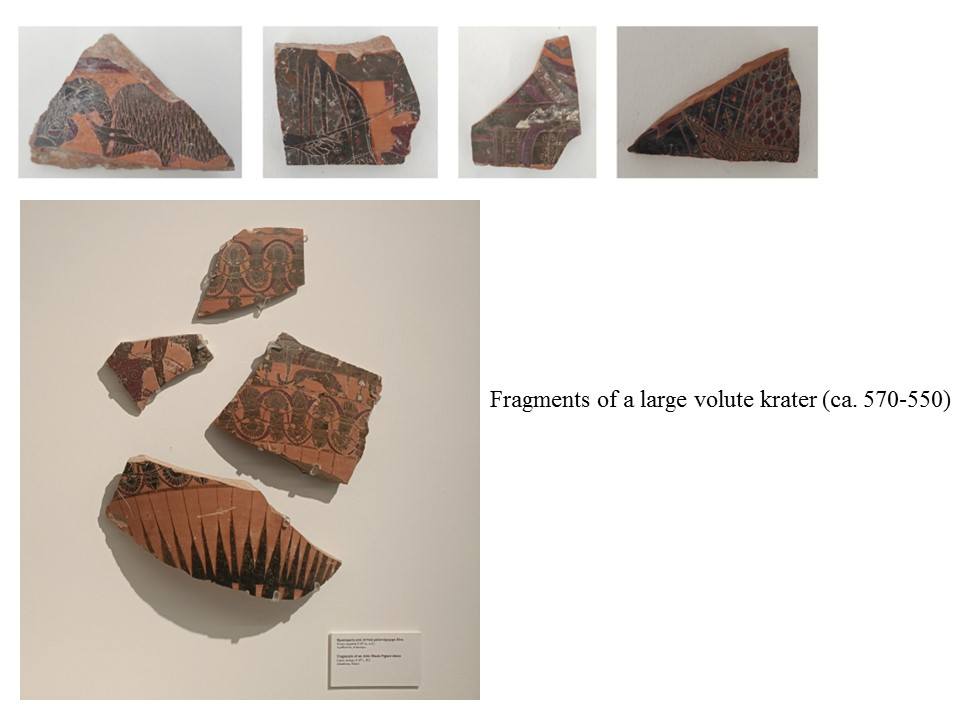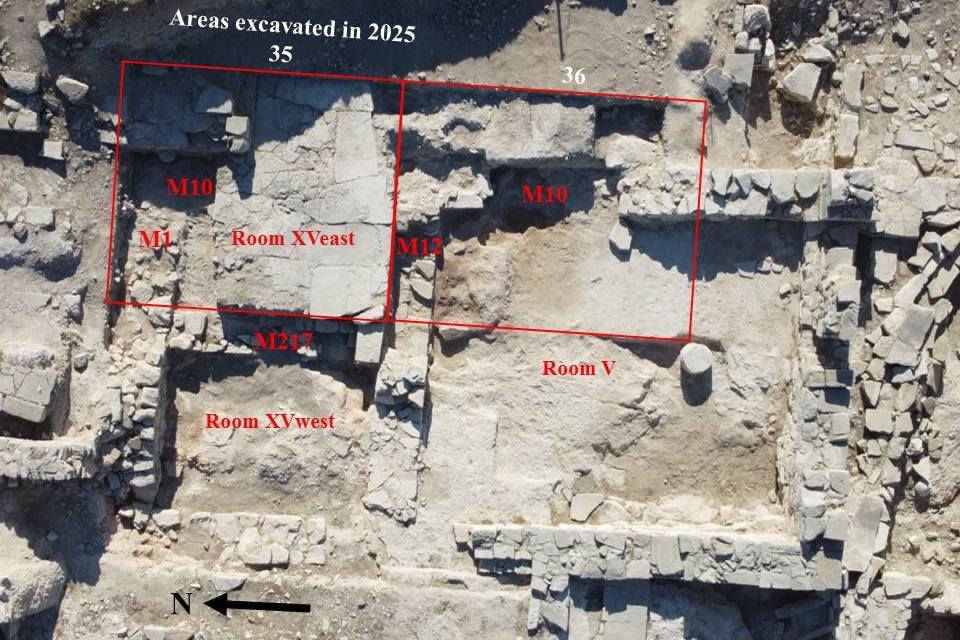An impressive helical crater, comparable to the famous Vase of François, is among the highlights of this year's research at the Palace of Amathus.
Equally decisive was the documentation of the complete design of the Palace's ceremonial hall, which dates back to the end of the 9th century BC. B.C.. The complete architectural design of the ceremonial hall, which belongs to the first monumental phase of the complex, was definitively documented this year, after the excavations in Zones 35 and 36. This important development confirms that it is the oldest known Iron Age palace in Cyprus.
It is impressive to highlight the most important collection of Attic black-figure and red-figure pottery ever found on the island, with a chronological coverage from 570-550 to the middle of the 4th century B.C. Among the findings, the aforementioned large helical crater stands out, comparable to the famous Vase of François (Crater of Cleitia).

This year's excavations at the palace took place from June 16 to July 4, 2025, under the direction of professor Thierry Petty at the Laval University of Quebec and Jean-François Ge, a member of the French School of Athens, with the aim of revealing the northeastern corners of two rooms, which constitute the first monumental phase of the Palace of Amathus.
As a result, two new areas were opened: Zone 35 and Zone 36. In zone 35, an extensive pavement of limestone slabs was revealed. Their footprint on the ground left sufficient space to the north to verify the existence of the supposed corner of the north room (fig. 1: Room XVeast). Therefore, the excavation proceeded directly to the rock at this point.

Although the walls forming the corner of the room had been removed to the rock, the rock itself had been carefully cut to form the floor of the room, thus revealing the original location of the walls (fig. 1: M1+M10).
In area 36, although they were also partially looted up to the rock, the two walls that formed the northeast corner of the south room (fig. 1: Room V) were preserved in a few layers (fig. 1: M12+M10). Therefore, we have the complete plan of the ceremonial hall of the first phase of the palace, dating back to the end of the 9th century BC, and its annex, thus making it the oldest Iron Age palace in Cyprus.
The study of the archaeological material continued from June 16 to July 24, 2025. They were supervised by Professor Antigoni Marangou at the University of Rennes 2 and Thierry Petty.
The study of the objects discovered during previous excavations focused particularly on Attic black-figure and red-figure pottery. Louise Dedre, curator at the Cabinet des Médailles of the National Library of France, found that this pottery covers the period from 570-550 to the middle of the 4th century BC.
The study reveals that this is the most important collection of this kind currently known on the island, including the oldest of these vessels, a large helical crater that would have nothing to envy from its more famous counterparts, such as the Vase of François, which was found in 1844 in a tomb in Cusi, Italy, and is now housed in the Archaeological Museum of Florence.
Other studies have been carried out on different materials: amphorae (A. Marangou), architecture, stratigraphy, amorphous Greek pottery, Hellenistic pottery and terra sigillata (T. Petty), pedology, carboniology and carpology (Maria Roussou, postdoctoral researcher at the Malcolm H. Wiener Laboratory – American School of Classical Studies in Athens – and associate researcher at UMR 7209 BioArch, MNHN, CNRS, Paris), textile art (Liz Levek, PhD student at the University of Rennes 2).
